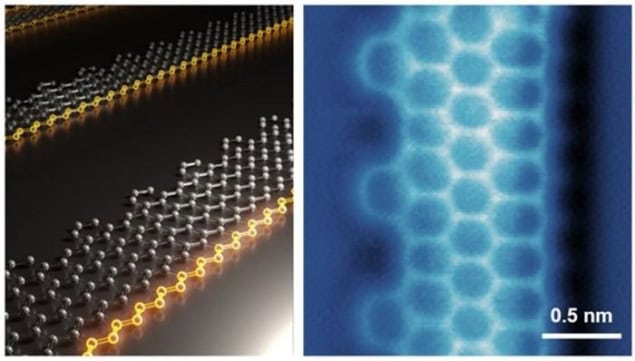Ultrashort electron beam sets new power record
Researchers at the SLAC National Accelerator Laboratory in the US have produced the world’s most powerful ultrashort electron beam to date, concentrating petawatt-level peak powers into femtosecond-long pulses at an energy of 10 GeV and a current of around 0.1 MA. According to officials at SLAC’s Facility for Advanced Accelerator Experimental Tests (FACET-II), the new beam could be used to study phenomena in materials science, quantum physics and even astrophysics that were not accessible before.
High-energy electron beams are routinely employed as powerful probes in several scientific fields. To produce them, accelerator facilities like SLAC use strong electric fields to accelerate, focus and compress bunches of electrons. This is not easy, because as electrons are accelerated and compressed, they emit radiation and lose energy, causing the beam’s quality to deteriorate.
An optimally compressed beam
To create their super-compressed ultrashort beam, researchers led by Claudio Emma at FACET-II used a laser to shape the electron bunch’s profile with millimetre-scale precision in the first 10 metres of the accelerator, when the beam’s energy is lowest. They then took this modulated electron beam and boosted its energy by a factor of 100 in a kilometre-long stretch of downstream accelerating cavities. The last step was to compress the beam by a factor of 1000 by using magnets to turn the beam’s millimetre-scale features into a micron-sized long current spike.
One of the biggest challenges, Emma says, was to optimise the laser-based modulation of the beam in tandem with the accelerating cavity and magnetic fields of the magnets to obtain the optimally compressed beam at the end of the accelerator. “This was a large parameter space to work in with lots of knobs to turn and it required careful iteration before an optimum was found,” Emma says.
Measuring the ultra-short electron bunches was also a challenge. “These are typically so intense that if you intercept them with, for example, scintillating screens (a typical technique used in accelerators to diagnose properties of the beam like its spot size or bunch length), the beam fields are so strong they can melt these screens,” Emma explains. “To overcome this, we had to use a series of indirect measurements (plasma ionisation and beam-based radiation) along with simulations to diagnose just how strongly compressed and powerful these beams were.”
Beam delivery
According to Emma, generating extremely compressed electron beams is one of the most important challenges facing accelerator and beam physicists today. “It was interesting for us to tackle this challenge at FACET-II, which is a facility designed specifically to do this kind of research on extreme beam manipulation,” he says.
The team has already delivered the new high-current beams to experimenters who work on probing and optimising the dynamics of plasma-based accelerators. Further down the line, they anticipate much wider applications. “In the future we imagine that we will attract interest from users in multiple fields, be they materials scientists, strong-field quantum physicists or astrophysicists, who want to use the beam as a strong relativistic ‘hammer’ to study and probe a variety of natural interactions with the unique tool that we can provide,” Emma tells Physics World.
The researchers’ next step will be to increase the beam’s current by another order of magnitude. “This additional leap will require the use of a different plasma-based compression technique, rather than the current laser-based approach, which we hope to demonstrate at FACET-II in the near future,” Emma reveals.
The present work is described in Physical Review Letters.
The post Ultrashort electron beam sets new power record appeared first on Physics World.

